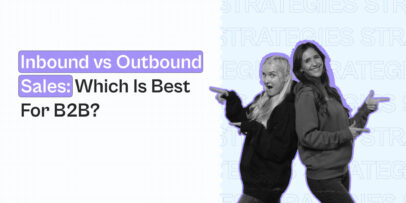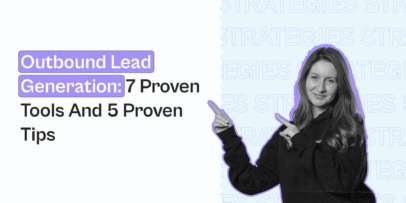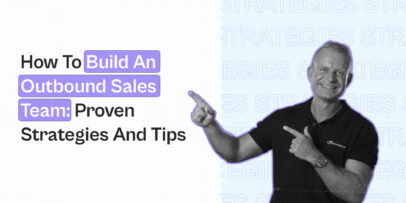Account Based Marketing (ABM) on LinkedIn: Beginner’s Guide
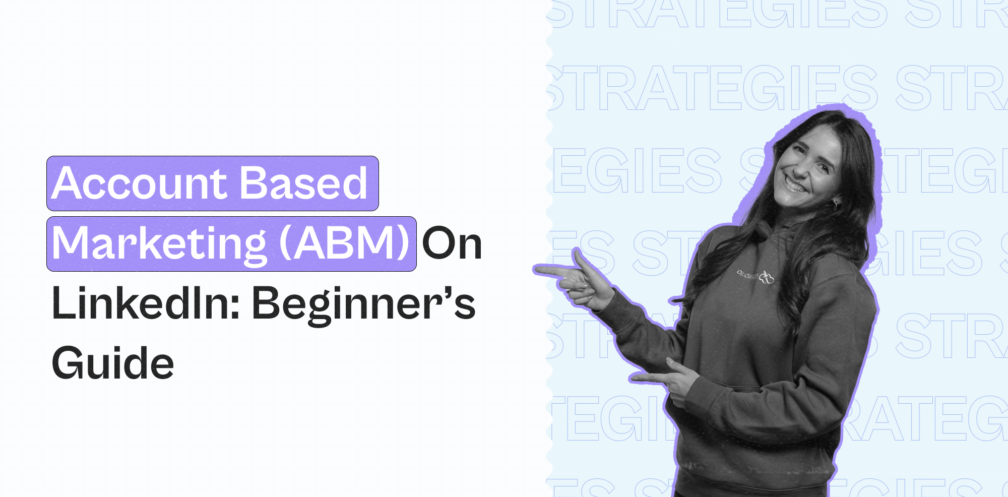
LinkedIn presents enormous opportunities for B2B organizations. It’s the platform for professionals. But how can you make the most of those opportunities?
Many marketers are using an account-based marketing (ABM) approach. It’s a great way to grow your revenue and maintain customer loyalty. Read on to discover how you can implement ABM on LinkedIn.
What is ABM on LinkedIn?
Account-based marketing is a strategy that focuses on targeting very specific high-value accounts or companies instead of a broader, more general audience.
For example, you may want to target unicron companies that have reached a valuation of $3 billion without being listed on the stock market. This can be tricky as there really aren’t many of them out there.
Therefore, your marketing strategy has to be well-thought out and hyper-targeted to make an impact and grab their attention. This is where adopting an ABM strategy can really pay off, especially when used alongside LinkedIn.
Nearly every company can be found on LinkedIn so it’s fertile ground for B2B companies looking to learn more about their target audience. You can leverage LinkedIn targeting capabilities to create personalized content and messaging. This helps you engage with key decision-makers at your targeted accounts.
It helps you build relationships and increase the chances of converting them into customers or clients.
There are different approaches you can take for ABM on LinkedIn. These include:
- Content Marketing
- Outreach
- Advertisement
Combining these strategies can help maximize the impact of your ABM efforts. For example, you could create and share targeted content to build brand awareness and establish your company as a thought leader in your industry.
Then, use outreach to connect with decision-makers at targeted accounts and build relationships with them. Finally, use LinkedIn ads to target those same decision-makers with personalized messaging and drive conversions.
And, with Linkedin automation, you can scale this process and achieve your goals faster, without losing the quality.
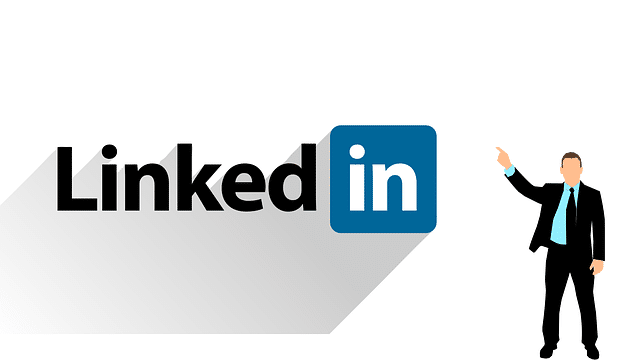
LinkedIn ABM: A Guide
If this is your first foray into ABM, you should know how to do it right. You’ll need to do some preparation and research to make it a success. Use this guide to get all your ducks in a row and make the most of ABM on LinkedIn.
First Steps
As with any project, preparation is key to success. Take your time to prepare yourself and your team for this new marketing approach.
Step 1: Establish your goals
First, work out what you want to achieve through ABM. Obviously, you’re trying to maximize revenues. However, you do that through ABM by really focusing on your objectives. The following examples are goals you may be thinking about.
- Attain more high-value customers.
- Get existing customers to adopt a new product.
- Increase recognition of your company.
- Speed up the B2B sales process.
- Increase the value of existing customers.
- Boost customer loyalty.
Step 2: Prepare your team
Once you understand your objectives, you need to communicate that to your people. Failure to do so results in an inconsistent experience for prospective customers.

Ensure each team knows the role they play. Lay out the specific tasks and responsibilities they’ll need to undertake. Create a plan explaining each process stage, from first contact to after-sales support. This will streamline the process to make it efficient and satisfactory for customers.
Step 3: Get the right tools for the job
You’ll need a LinkedIn Sales Navigator license. You might be tempted to rely only on the usual LinkedIn search facility, but this won’t give you access to the advanced filters necessary to really target the accounts you want.
LinkedIn Sales Navigator has many valuable features. It gives you full access to the LinkedIn database. You can search for accounts using advanced filters. This allows you to focus on converting the right accounts to meet your objectives. You can also save your searches. This is something we’ll look at later in more detail.
Additionally, LinkedIn Sales Navigator alerts you to the activities of your leads. Say you offered a link for a business agreement template. If a prospect clicks the link, you can track that activity. This presents opportunities for improved targeted advertising. If a prospect announces a significant anniversary, for example, congratulate them. Send them a congratulatory message and include marketing materials.
This is where Expandi can be a great tool to use. It allows for easy scraping of LinkedIn Sales Navigator search results and automation of LinkedIn outreach to targeted accounts. This means you can send hyper-personalized messages, including text, images, and GIFs to really engage with your prospect.
Expandi could also help to automate follow-ups to decision-makers in a personalized and timely manner, increasing the likelihood of conversion. These features help build relationships with high-value accounts more efficiently.
Targeting
There are millions of accounts on LinkedIn. Herein lies a problem. How do you get your content seen by the right people? The solution is focused targeting. An effective ABM campaign is effective when your targeting is on point. Read on to learn how to achieve that.
Determine your ideal customer profile
You need to understand the type of customer that represents the best value for your company. This is your ideal customer profile (ICP). Right now we’re thinking about the organizations rather than the individuals therein. Ask yourself the following questions.
- What industry do they operate in?
- Where are they operating?
- How big is the company?
- What can I offer them?
- Do they currently use one of your competitors?
When you answer these questions, you begin to see what kinds of prospects you should target.
Pick your target organizations
Once you know your ICP, you’ll want to create a list of organizations to target. Use LinkedIn Sales Navigator and web searches to find them.
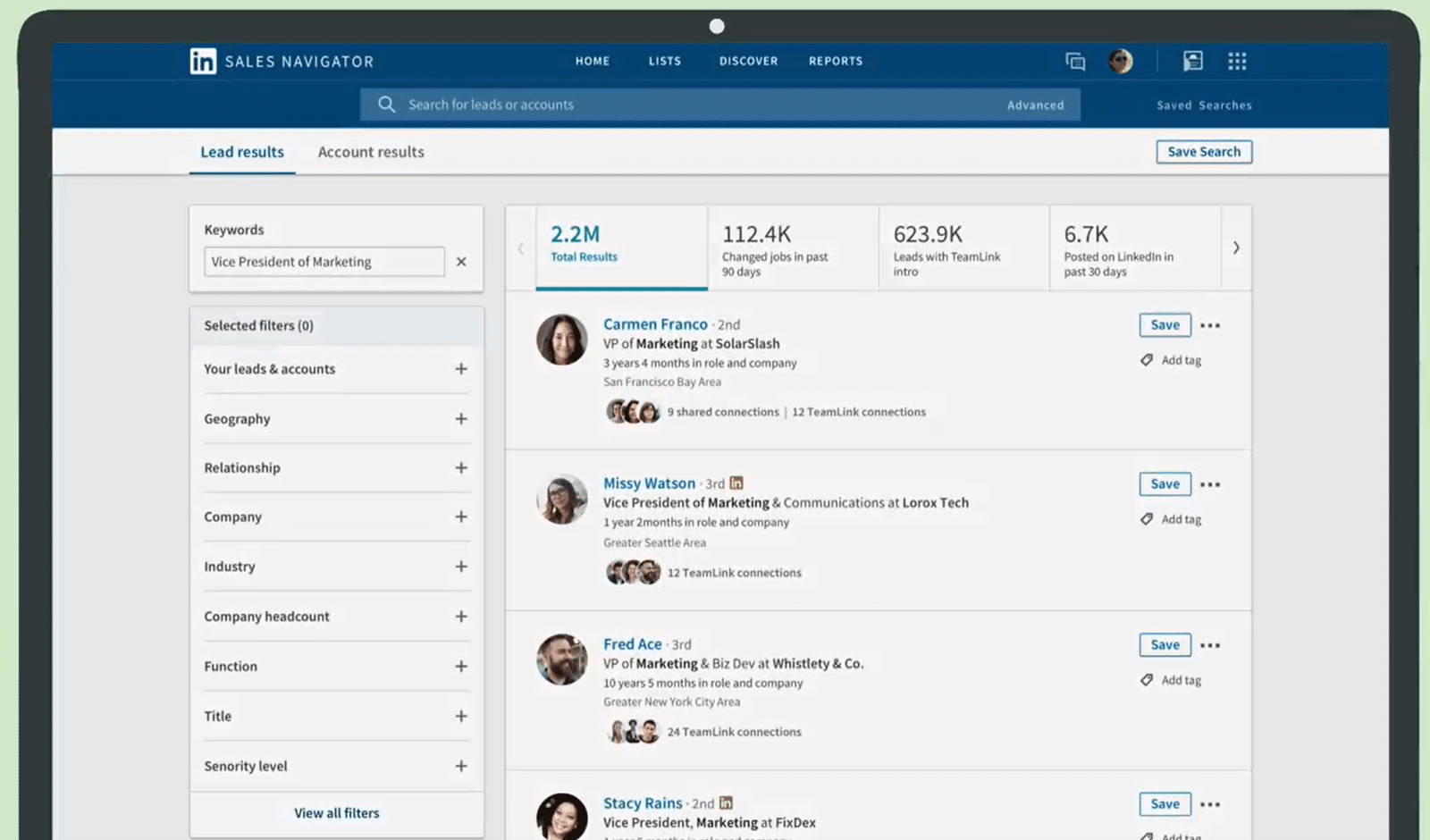
This research phase will provide you with a lot of useful information. Build a profile for each prospect. Your teams can use it when they begin the advertising campaign.
Pick your target individuals
Once you identify your target organizations, find the individuals to advertise to on LinkedIn. You can’t really market to a company. You should build relationships with people, not organizations. It can’t be just anyone who works at a target business, either. You need to find the decision makers.

Search the company name on LinkedIn to find their current employees. Use their job titles to determine whether they can make decisions leading to sales for you. Sales Navigator allows you to filter by job title, among many other criteria. This will save you a lot of time and effort.
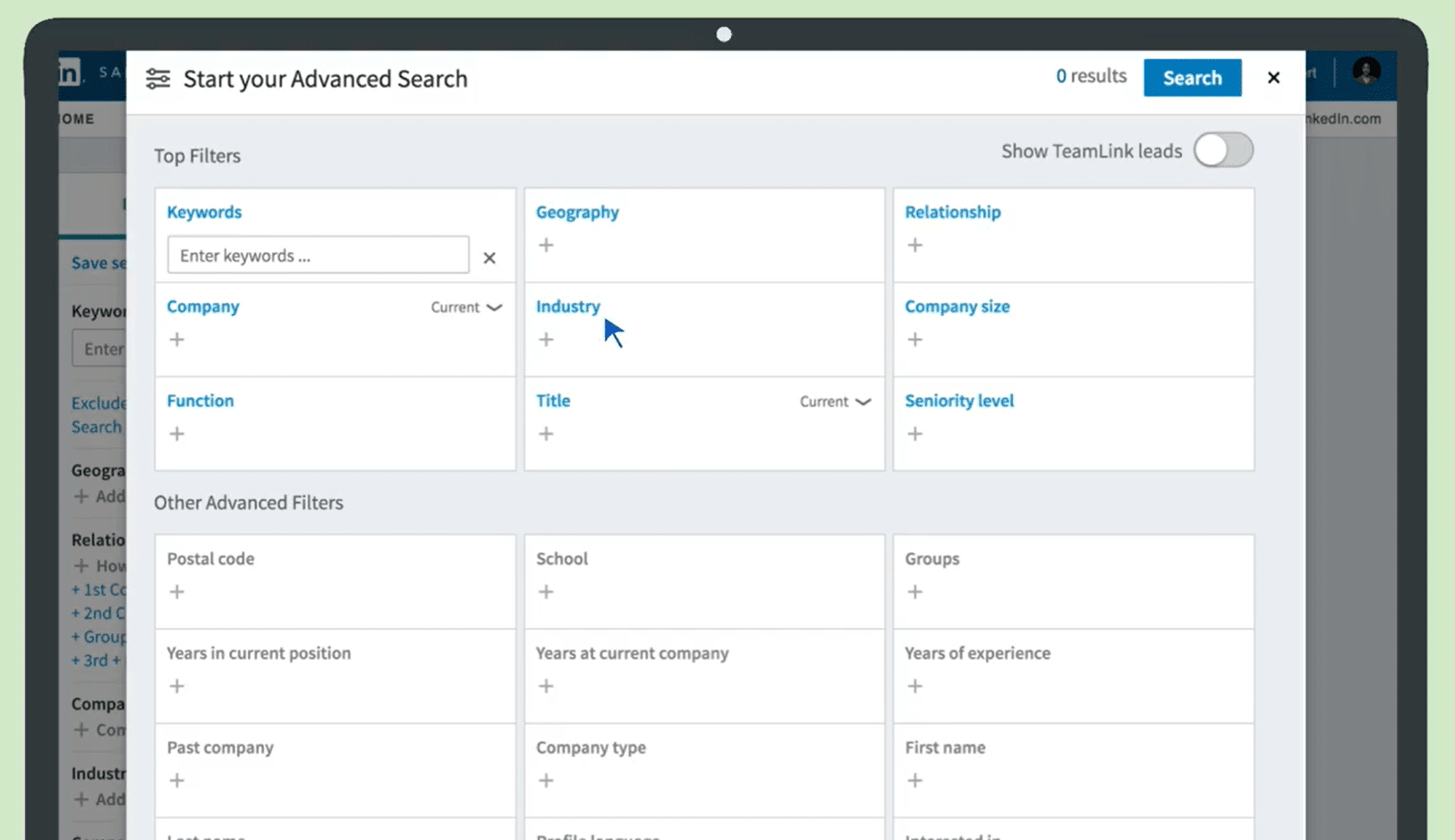
Learn about your prospects
Use LinkedIn to find out as much as possible about the individuals you’ll reach out to. Also, find out as much about the target company as you can.
Try to identify their needs and how you can fulfill them. Imagine you’re in the e-signature business. If you see someone commenting about DocuSign pricing plans, that could be an opportunity. You’ll be looking for information to support your claim that you can provide the best possible solutions.
Perhaps more importantly, find information that helps you craft personalized messaging. Look for triggers unique to the individual. These could be from outside of their professional lives. You can weave references to interests, family life, or work history when you reach out to individuals.
Automation of targeting on LinkedIn
New organizations and individuals come onto LinkedIn every day. So you’ll want to capture those new users coming online.
But it can be difficult to find your target audience amongst so many different users, even using Sales Navigator filters. One option here is to use Expandi for automated scraping.
This handy tool can help you:
Scrape LinkedIn group members
Scrape LinkedIn event attendees
Scrape people who engaged with a specific LinkedIn post
By doing this you can compile essential data and identify individuals with particular interests or are in specific locations. This all helps you to develop ABM campaigns that are closely aligned with your target audience.
Launch Campaign
You’ve done the prep work. You’ve picked your targets. Now you need effective and persuasive content to move targets along the B2B sales funnel. The ultimate aim is to generate more sales.
Craft targeted content
There are various types of content you can use for marketing. Email, LinkedIn sponsored content, or direct messaging are all viable options. Use a range of content to get noticed.
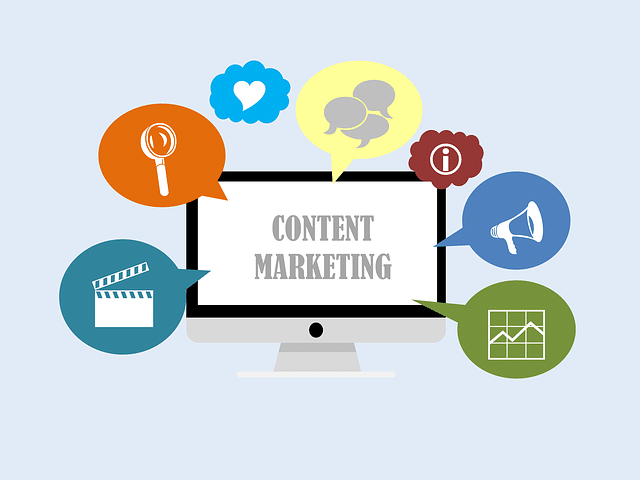
Use your research to create personalized content. 84% of business buyers are more likely to buy from sales reps that understand their goals. Personalization is the best way to reach individuals in organizations. It’s the very essence of an ABM campaign. Speak to the specifics of the target account’s industry and interests.
You should highlight what your business can offer that’s unique. What sets you apart from the competition? That could be service level, product range, or price point. Is there some innovation that you can offer customers? You have to find something that only you can do. Then tell all your prospects about it.
You could also offer free resources to potential customers. Let’s look at an example. Take a company offering legal documentation services. They could give away a free non disclosure agreement template. This would cost very little but could garner a lot of positive attention.
Be mindful of the tone of your content. LinkedIn isn’t like other social networks. It’s a business platform. You don’t want to garner the wrong kind of attention. Always keep your objectives in mind.
When you see a prospect engaging with your content, that’s the time to make a pitch. Remember, you’re creating content with a purpose. That purpose is to move the viewer along on the customer journey.
Monitor success
It’s always a good idea to take stock and adjust as necessary. This is especially true when trying a new marketing approach. Happily, LinkedIn Sales Navigator provides in-depth analytics. This means you can monitor your campaign’s success through various indicators. Likes, comments, and shares are indicative of your engagement rate.

You should compare content engagement with your sales numbers. If engagement is high, but there’s no sales uplift, something isn’t working. This may indicate that your selling messages aren’t hitting the right notes.
Give the campaign some time to bed in before making adjustments. If your team is new to this, they’ll need some opportunity to get used to it. That said, when it’s time to make the decision to change something, don’t hesitate.
Integrate with a CRM
You can integrate LinkedIn Sale Navigator with your customer relationship management software. This gives more visibility into how your campaign is influencing your sales efforts. You need to enable CRM sync to grant access to many CRM functionalities. These include but are not limited to the following:
- Auto-save
- Activity writeback
- ROI reporting
- Search filtering
ABM: A Targeted Way to Generate Sales
Account-based marketing is not a Spray and Pray approach. It’s a focused effort to convert likely prospects. The quality of research will determine the efficacy of your content personalization. In other words, knowledge is power.
By leveraging ABM to your advantage, you’ll be able to generate high-quality leads that you can convert into sales. While it may require a significant initial investment by your sales and marketing teams, the results will speak for themselves.
ABOUT AUTHOR:
Yauhen Zaremba – Director of Demand Generation
Yauhen is the Director of Demand Generation at PandaDoc, all-in-one document management tool for almost all types of documents including these PandaDoc house lease agreement templates. He’s been a marketer for 10+ years, and for the last five years, he’s been entirely focused on the electronic signature, proposal, and document management markets. Yauhen has experience speaking at niche conferences where he enjoys sharing his expertise with other curious marketers. And in his spare time, he is an avid fisherman and takes nearly 20 fishing trips every year.
You’ve made it all the way down here, take the final step
